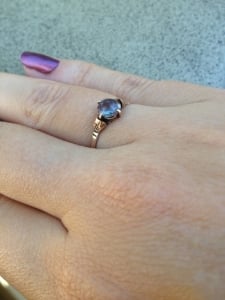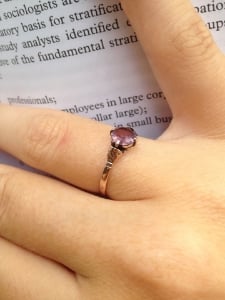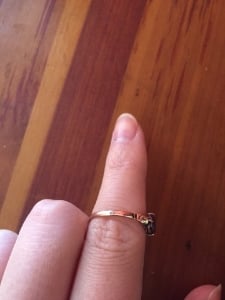VintageValuables
Rough_Rock
- Joined
- Dec 4, 2014
- Messages
- 19
Hi everyone! Im pretty new to posting but I've been reading on here for a while! I love seeing all the amazing pieces and information you guys share!  I am currently working on my GIA GG and buy/sell a lot of antique and vintage jewelry. I recently came across this ring and was wondering if anyone could give their opinion on the stone? Ring is 9k (stamped on outside of the band) id date it to about the 1860's and the center stone is 6mm. It appears to be an alexandrite as it goes from a teal to a mauve purple. Bright and complete color shift.(pix do not do it justice) Mixed light produces mixed colors. In a ring this old it should be Russian right? I know how incredibly rare those are thats why id love anyone's thoughts on this piece! Ring was sold to me as costume. (btw Im not far enough along with GIA to test it, and i don't have the funds to send it to AGL.) Thanks so much!
I am currently working on my GIA GG and buy/sell a lot of antique and vintage jewelry. I recently came across this ring and was wondering if anyone could give their opinion on the stone? Ring is 9k (stamped on outside of the band) id date it to about the 1860's and the center stone is 6mm. It appears to be an alexandrite as it goes from a teal to a mauve purple. Bright and complete color shift.(pix do not do it justice) Mixed light produces mixed colors. In a ring this old it should be Russian right? I know how incredibly rare those are thats why id love anyone's thoughts on this piece! Ring was sold to me as costume. (btw Im not far enough along with GIA to test it, and i don't have the funds to send it to AGL.) Thanks so much!












300x240.png)